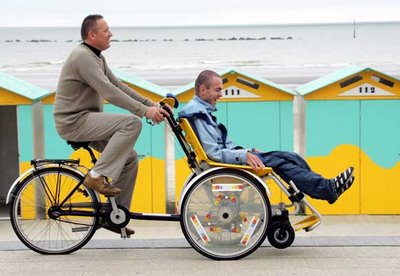Tourism month focus: Accessibility
September marks Tourism Month in South Africa and this year’s theme is in line with that of World Tourism Day (27 September) – Tourism for All – promoting universal accessibility. This not only means creating spaces, products and services that are user-friendly to people with physical disabilities but also to those hindered in any way – whether by age, transport or even budget.
Although it will take a while for South Africa to become completely barrier-free in terms of accessibility, we’ve come a long way in making tourism available to all. The MyCiTi service in Cape Town, for example, has tactile paving that helps the visually impaired locate stations, induction hearing loops at ticket kiosks, boarding bridges for level access, wheelchair-accessibility, priority seating for pregnant women and CCTV surveillance and security for those travelling alone at night. The Gautrain in Johannesburg is equipped with audible and visual announcements, tactile and audible guidance, clear signage and lighting, non-reflective surfaces and colour contrasts. It also has level boarding, non-slip surfaces, hand rails and for wheelchairs there is designated space of trains, wide access gates as well as accessible ticket vending machines. The entire system is also pram-friendly and changing facilities are available at stations.
Tourist attractions and products are designed with the purpose of being enjoyed by all – whether young or old – but unfortunately not everybody is able to have the opportunity because of the levels of access. In some cases, attractions do have the accessibility, but this isn’t communicated well enough, so tourists don’t bother to visit the site at all. The Science Museum in London caters particularly well for disabled visitors, with large print and Braille, deaf-lead tours, audio-described events and specially trained staff always on hand. It’s not just about wider doors for wheelchairs and ramps alongside stairs – it’s also about having reliable information about the attraction’s levels of accessibility and having professional staff capable of dealing with accessibility issues. At the recent Attractions Africa conference, René Moses from Travel with René, who specialise in wheelchair-accessible transport reiterated this by highlighting simple changes which can be made at most tourist attractions by simply re-imagining the experience as a person with an impairment – reconsider steps – even just one, width of doors, size of lifts, sounds, smells and visual guidance to name but a few aspects.
The City of Cape Town recently opened its first blind-friendly park, designed with special features such as a scented garden and acoustic way-finding. This gives all children, whether visually impaired or not, an opportunity to interact and play together in an accessible space. A project of this scale requires a lot of work, but sometimes it’s even the smallest additions that make the world of difference – for example, regular seating areas throughout an attraction. Someone with restricted mobility will much rather visit a place like this, than a place where they’re expected to stand for long periods. South Beach in Durban has made purpose-built wheelchairs available for those wanting to meander on the sand with ease. It’s something simple, but very effective. Kruger National Park has kitted most of its public areas and lookout points with access ramps and accessible ablutions –guests can even book tours on adapted vehicles that will make game-viewing easier.
In keeping with the #TourismforAll theme, SANParks week (12-18 September) grants free access to most of the national parks to all South Africans, a great opportunity for all South Africans to explore and get to know the 22 national parks. As an added extra for accessibility, SANParks teamed up with Metrorail to offer an affordable train-and-shuttle service for people who would normally have difficulty getting to the tourist attraction due to the distance from the city. Cape Point has also launched a free audio tour that allows visitors to explore the site at their own pace while listening to interesting stories, facts and legends. The popular Flying Dutchman funicular is wheelchair-friendly, as is the Two Oceans Restaurant on site. Although people with limited mobility won’t be able to head right up to the lighthouse, there are many lookout points just below where visitors can still enjoy exquisite views.
“As Thebe Tourism, one of our ongoing goals is to make tourism accessible and affordable for all South Africans.” Says TTG General Manager, Brett Hendricks. “We believe the balance between affordability and product-offering which suits the local requirements are key factors in driving domestic tourism. As part of our 2020 vision, our goal is to be the preferred service provider to the domestic market and aim to get more South Africans to travel and explore their own country. We will also be looking to expand our portfolio in the sector, specifically in tourist attractions and hospitality – ultimately fulfilling the tourism value chain while continuing to align ourselves with companies with the same values and vision as Thebe.”


